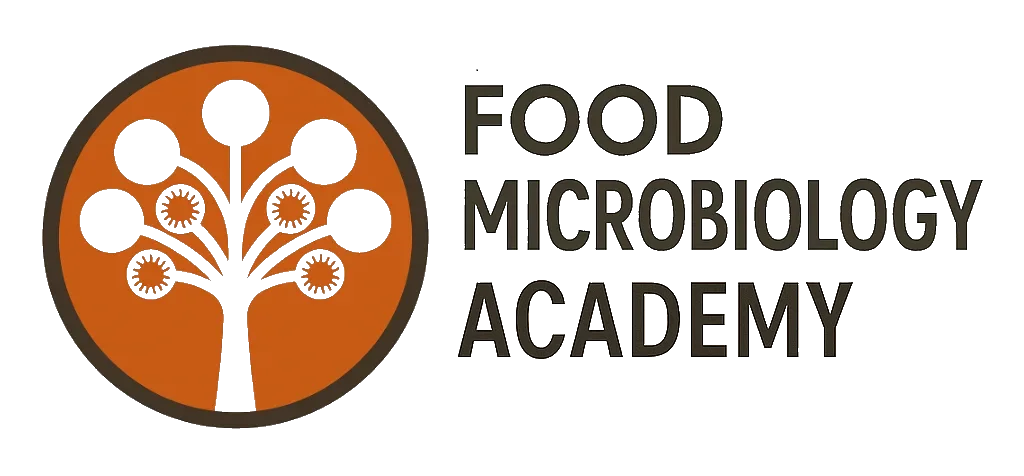- Food microbiology is the study of microorganisms that interact with food, including bacteria, viruses, yeasts, molds, and parasites.
- Microorganisms can be both beneficial and harmful to food. Beneficial microorganisms are used in processes like fermentation and production of certain foods, while harmful microorganisms can cause foodborne illnesses.
- Bacteria are the most common microorganisms associated with food spoilage and foodborne diseases.
- Some common bacteria that cause foodborne illnesses include Salmonella, Escherichia coli (E. coli), Listeria monocytogenes, and Campylobacter.
- Viruses, such as Norovirus and Hepatitis A, can also contaminate food and cause foodborne illnesses.
- Yeasts and molds are responsible for food spoilage and can affect the texture, flavor, and appearance of food.
- Microorganisms can contaminate food at various stages, including during production, processing, transportation, and storage.
- Foodborne illnesses can result from consuming contaminated raw or undercooked food, improper food handling and preparation, cross-contamination, and inadequate storage temperatures.
- Temperature control is crucial in preventing the growth of harmful microorganisms. The temperature danger zone for food is between 4 °C (40 °F) and 60 °C (140°F).
- Pasteurisation is a process that involves heating food to a specific temperature to kill or inactivate harmful microorganisms, while retaining the food’s quality.
- Fermentation is a process that uses beneficial microorganisms, such as bacteria and yeasts, to convert sugars into alcohol or acids. Examples include yogurt, cheese, sauerkraut, and pickles.
- Probiotics are live microorganisms that, when consumed in adequate amounts, provide health benefits. They are often found in fermented foods and are known to promote gut health.
- Food preservation techniques, such as canning, drying, and freezing, aim to prevent or slow down the growth of spoilage and pathogenic microorganisms.
- Good hygiene practices, including proper handwashing, cleaning and sanitizing of surfaces, and maintaining personal hygiene, are essential in preventing the spread of microorganisms in food.
- Hazard Analysis and Critical Control Points (HACCP) is a systematic approach used in the food industry to identify and control potential hazards related to food safety.
- Foodborne illnesses can have various symptoms, including nausea, vomiting, diarrhea, abdominal pain, fever, and in severe cases, organ failure or death.
- Proper cooking temperatures are critical to ensure the elimination of harmful microorganisms. For example, poultry should reach an internal temperature of 74 °C (165 °F), while ground meat should reach 71 °C (160 °F).
- Cross-contamination can occur when raw foods come into contact with cooked or ready-to-eat foods, potentially transferring harmful microorganisms. Separate cutting boards and utensils should be used for raw and ready-to-eat foods.
- Some food products undergo a process called aseptic packaging, which involves sterilizing the food and packaging materials separately and then filling the sterile food into sterile containers.
- The pH level of a food product can influence the growth of microorganisms. Most bacteria prefer a neutral pH around 7, while some acid-tolerant bacteria can grow in low-pH environments.
- Food poisoning is a type of foodborne illness caused by the ingestion of toxins produced by certain bacteria, such as Staphylococcus aureus and Bacillus cereus.
- Food intoxication occurs when the ingestion of food contaminated with live microorganisms leads to illness. Examples include Salmonella and Campylobacter infections.
- Food allergies are immune responses triggered by specific proteins in food. They are not caused by microorganisms but can be influenced by cross-contamination or improper labeling.
- Botulism is a severe form of food poisoning caused by the toxin produced by the bacterium Clostridium botulinum. It can result from improperly canned or preserved foods.
- Fermented dairy products, such as yogurt and kefir, contain beneficial bacteria known as probiotics, which can contribute to a healthy gut microbiome.
- The use of antibiotics in livestock can contribute to the development of antibiotic-resistant bacteria, which can potentially be transmitted to humans through contaminated food.
- The development of rapid diagnostic methods, such as polymerase chain reaction (PCR) and next-generation sequencing, has revolutionised the detection and identification of microorganisms in food.
- Food microbiologists often work closely with food scientists, food safety experts, and regulatory agencies to ensure the safety and quality of food products.
- Food recalls can occur when a product is found to be contaminated with harmful microorganisms or other hazards. They are initiated to protect public health.
- Some microorganisms, such as certain strains of bacteria and yeasts, are used in the production of alcoholic beverages through the process of fermentation.
- Foodborne pathogens can survive and multiply in refrigerated environments, emphasising the importance of proper storage temperatures and practices.
- Cross-protective adaptations can occur between different microorganisms in food, where the presence of one microorganism inhibits the growth of another.
- Food fermentation can enhance the nutritional value of foods by increasing the availability of certain vitamins and minerals.
- Some moulds produce mycotoxins, which are toxic compounds that can contaminate food. Examples include aflatoxins, produced by Aspergillus molds, which can be found in nuts, grains, and spices.
- Biopreservation is a technique that uses naturally occurring microorganisms or their products to inhibit the growth of spoilage and pathogenic microorganisms in food.
- The microbial composition of food can vary depending on factors such as the source of the food, processing methods, and storage conditions.
- Some beneficial bacteria, such as those in the genus Lactobacillus and Bifidobacterium, are commonly used as starter cultures in the production of fermented dairy products.
- Foodborne illness outbreaks can occur when multiple people experience similar symptoms after consuming contaminated food from a common source.
- Food safety regulations and guidelines differ among countries and are often based on risk assessments and scientific evidence.
- The use of bacteriophages (viruses that infect bacteria) is being explored as a potential alternative to antibiotics for controlling bacterial pathogens in food.
- Some microorganisms, such as those in the genus Saccharomyces, are used in bread making and contribute to the fermentation process, resulting in the production of carbon dioxide and alcohol.
- High-pressure processing (HPP) is a non-thermal food preservation technique that uses high pressure to inactivate microorganisms while retaining the nutritional value and quality of food.
- Microorganisms can form biofilms on food contact surfaces, making them more resistant to cleaning and sanitising agents.
- The presence of certain microorganisms, such as Pseudomonas spp., can accelerate the spoilage of fresh produce.
- Foodborne illnesses can have significant economic impacts, including medical costs, loss of productivity, and damage to the reputation of food manufacturers.
- The study of foodborne pathogens and their transmission routes is essential for developing effective control strategies to prevent foodborne illnesses.
- Some microorganisms, such as certain strains of bacteria and yeasts, can produce enzymes that enhance the flavor and texture of food products.
- Food safety training and education are vital for food handlers and consumers to prevent foodborne illnesses and ensure proper food handling practices.
- Microbial testing is commonly used in the food industry to monitor the quality and safety of food products.
- Ongoing research in food microbiology aims to develop novel methods for microbial control, improve food preservation techniques, and enhance our understanding of the complex interactions between microorganisms and food.



